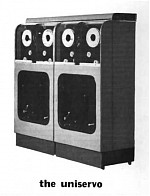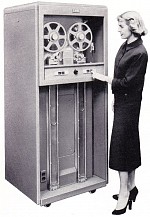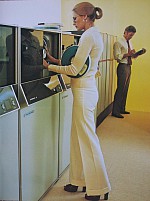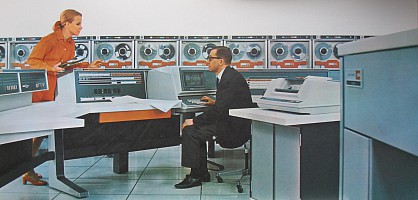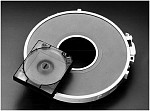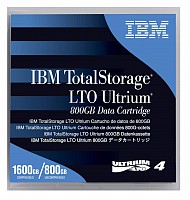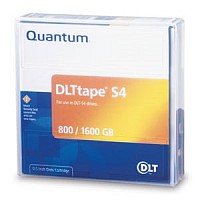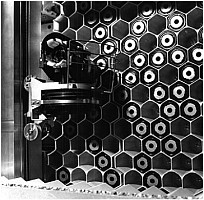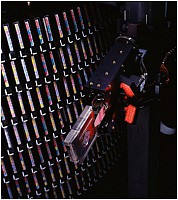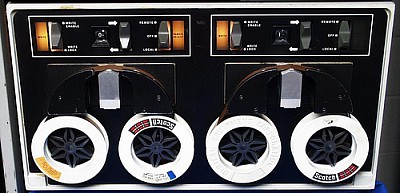Computer Science
Computing History Displays: Fifth Floor - Magnetic Data Storage - Magnetic Tape Storage
Magnetic tape recording was a technology available for use by the first computers. However, adapting the analog audio technology to provide fast and reliable long-term storage for digital data required a number of years of development and appears to have been a more difficult engineering task than was the development of the magnetic drum.
The first US commercial computer, the UNIVAC, was designed to operate with magnetic tapes which they called "Uniservos". The characteristics of the recording were just as in later tape drives. There were 8 tracks read or written in parallel, giving 6-bit characters and timing control. The tape stored 128 bits per inch, operated at a speed of 100 in/sec and could transfer data at a rate of 800 characters per second once the tape was up to full speed. However the tape took 10ms to start or stop. Data was thus arranged in blocks of 720 characters with gaps between blocks that allowed for starting/stopping of the tape.
The Uniservo used cumbersome tapes made of steel. A lighter cheaper plastic medium similar to that for audio recording would have been preferred, however the flexibility and lower strength of the plastic tape was a serious problem for high-speed operation. These problems were eventually solved at IBM with the IBM 726 tape drive in 1953. With the IBM tapes an ingenious vacuum buffer divorced the movement of the massive reels from the movement of tape.
The IBM tapes set standards that would be followed by others for 20 years. The diameter of the tape reel was 10 1/2 inches, though smaller reels could be used. The density of storage was gradually increased from 100 characters per inch to 1600 characters per inch. Tapes were used ubiquitously for backup of commercial records. Before on-line disks were widely available any records required would need to be loaded on to the tape drives manually. Large computer installations needed to develop procedures for handling the thousands of tapes in their libraries.
Magnetic tapes are designed so that a block of data may be read or written as a whole. It is not possible to change individual characters within a block. Likewise it is not possible to change the size of a block because of the need for fixed-size starting/stopping gaps. Consequently, it is normal for a tape to be written in its entirety.
To deal with variable records stored permanently in a tape-based data base, techniques were developed called "batch processing". Typically, records on tape were stored in the order of some key on a master tape. Changes to records were stored on an update tape, also ordered by key. The batch processing algorithm would read the master file and the update file in order, producing a new master file which was written to tape file by file in order. This style of data processing dominated commercial data processing until online storage in disks became feasible in the 1970s. A lot of early interest in sorting algorithms was to find ways of efficiently ordering the update records by their keys.
As computer systems changed from batch processing to on-line storage and updating data on permanent direct access disks, the role of the tape changed from one of containing the data base to that of archiving and backup. The mode of use of tapes changed from accessing small records and blocks to reading and (in particular) writing very long streams of data. By 1970 tapes had capacity of 46 Mbytes, quite a lot less than the hard disks they were supporting. Tapes needed to have higher capacity and faster transfer rates. They were also awkward to use, requiring manual intervention and were quite bulky. The typical image of a 1970s computer room was dominated by its array of tape drives:
Some of these problems were addressed by changing from tape reels to cassettes. The IBM 3480 cartridge of 1973 was only 4 x 5 x 1 inches but could hold 180 Mbytes (the later 3480E held 400 Mbytes) and transfer data at four times the rate of reel-to-reel tapes. These improvements were based on a number of features - double width recording, better magnetic material, error-correcting codes and magnetoresistive read heads. This line of development has continued to the present day with tape capacity just keeping pace with disk capacity.
Digital Equipment Corporation introduced their own streaming tapes for back-up purposes in the mid 1980s. This used a single reel 1/2 inch cassette with data written as a continuous stream of bits from one end of the tape to the other, then writing in the reverse direction, with a large number of tracks on the tape. This, called DLT for Digital Linear Tape, initially stored 94 Mbytes on 22 tracks. The technology was later taken over by Quantum Corporation and has become a widely used standard for small and middle-sized systems. Improvements have been made over the years to the extent that, in the same package, a longer tape stores multiple hundreds of gigabytes in up to 448 tracks! (As of 2004.)
IBM formed part of a consortium of manufacturers of tapes and tape drives in the mid-90s which specified a tape standard for a market to which all could contribute. This standard is called LTO for "Linear Tape Open." The latest tape drives from IBM are the "Ultrium" series. The consortium also laid out a roadmap for a gradual increase in tape capacity over the years.
LTO is a streaming tape format that, like DLT, writes data in both directions along the tape. DLT and LTO seem now to be very similar. Both have heads that are movable from track to track with servo signals controlling the position of the heads accurately. LTO has always written data byte-wide with a multiple-track head but DLT now does the same. Tape and disks have both pushed technology to the limits and each has contributed to the development of the other.
Even with cassettes, the number of volumes in a tape library is enormous and locating and mounting tapes that are required is tedious. Over the years there have been many attempts to provide automatic archiving devices of great capacity. These have been of two types, archives that involve a new type of storage and those that are "robots" automating access to conventional media. The new technologies have been generally been unsuccessful, often because the mainstream alternatives are improved more quickly. Among these were the IBM Data cell for the IBM System/360 and the IBM 3850 cellular store of 1975. The tape robots were more successful. These were made originally for reel-to-reel tapes and more recently for conventional cassettes. There are large robots for very big data bases and more modest "juke boxes" for smaller systems.
Almost every variety of audio and video tape has been adapted for data storage. Some of these were of very large capacity, such as several gigabytes in VHS video tape. These were also not generally widely adopted, though an exception was the standard audio digital DAT tape in the late 1980s which was extensively used - the tapes having a capacity of several GBytes. These tapes were designed for back up, operating in "streaming mode" whereby large files were transferred as a unit.
Another adaptation of audio tape was as program storage for the first low-cost personal computers. Standard audio tape recorders were used to store bits encoded as sound signals. These were very slow and of low capacity but adequate for these entry-level applications. There was never any standard for data encoding accepted (though an adaptation of FSK data communications standard, which used two distinct audio frequencies for the bit states, was widely used.) These awkward-to-use tapes were soon replaced by floppy disks when they became widely available at a lower cost.
A use of tapes that was of particular interest in research applications was DEC-tape of Digital Equipment Corporation used in their PDP computers. The DEC tape was pre-formatted with timing tracks so that it was possible to read and change individual characters on the tape. DEC-tape was often used more in the manner of a floppy disk than a conventional tape.

